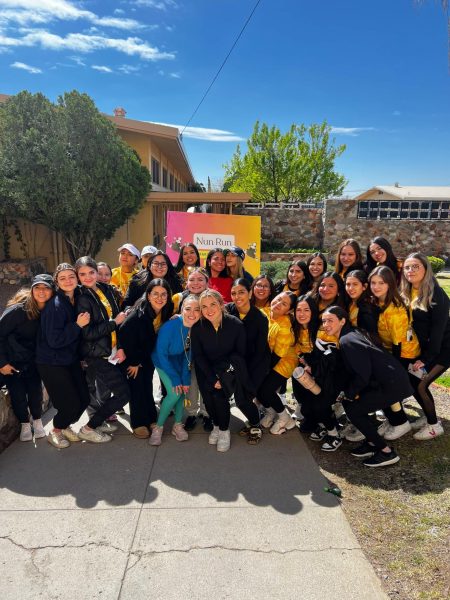Attacks on houses of worship
May 5, 2019
Over the past few months there have been countless news concerning attacks on religious institutions and houses of worship all over the world.
This year’s Holy Week has seen a dangerous trend of attacks that make Houses of Worship the most vulnerable.
San Diego Attack
On Saturday April 27, a gunman entered a Chabad of Poway synagogue outside San Diego and opened fire killing one woman and injuring 3 people.
The gunman opened fire as people gathered to celebrate the end of Passover, one of the holiest holidays in the Jewish calendar.
According to the San Diego County Sheriff, the shooting happened at 11:23 a.m. local time — 23 minutes after the synagogue’s Passover celebration scheduled for 11 A.M., according to the synagogue’s Facebook page.
The suspect fled the shooting and then reported his location to 911, according to San Diego Police Chief David Nisleit. The shooter surrendered to a K-9 officer without incident.
According to CNN, authorities are still investigating a motive behind the attack however it has been declared a hate crime because of “statements that were made when the shooter entered according to witnesses.”
Detectives have discovered an open letter that the shooter wrote online before the attack.
In the open letter posted to 8chan, viewed by CNN, the writer talks about planning an attack and references other attacks on houses of worship, including the shootings at Tree of Life synagogue in Pittsburgh and at mosques in Christchurch, New Zealand.
Sri Lanka Attacks
On Easter Sunday 2019, suicide bombers killed 253 people and injured 500 at churches and top end hotels across Sri Lanka.
Several of those bombs that went off inside churches detonated when Easter services were being held.
Sri Lanka’s minority Christian community, which accounts for less than 10% of the country’s total population of 21.4 million, appeared to be the main target of the coordinated attacks.
Though it wasn’t originally clear on who was behind the attack, Manisha Gunasekera, the high commissioner of Sri Lanka labeled the incidents as “attacks of terror”.
According to CNN, suicide bombers struck three churches around the country: St. Antony’s, a popular shrine in the capital, Colombo; St. Sebastian’s in Negombo, north of the capital, where 102 people died; and the Zion Church, in the eastern port city of Batticaloa.
Ten days before the attack, an intelligence memo warning of a possible attack had been circulated, raising questions about whether more could have been done to prevent the attack.
An island-wide curfew was implemented until the following morning.
The attacks have been linked to ISIS and various terrorists groups throughout Asia.
The Sri Lanka attack has raised concerns over ISIS’s growing reach.
St. Patricks Cathedral Attack
On April 18, Marc Lamparello, a philosophy teacher at the City University of New York (CUNY), walked into the St. Patricks Cathedral in Manhattan carrying cans of gas and a lighter with clear intent of arson.
He was confronted by the Church ushers and told to leave before he could carry out the rest of his plan, the ushers then notified the NYPD about the incident and Lamparello was tracked down and arrested and is now facing charges of attempted arson, reckless endangerment and violations of city codes involving the transport of flammable materials in public places.
Prosecutor David Stuart said investigators obtained phone messages and other materials under a search warrant that indicated Mr. Lamparello intended to start a fire, and had “spent considerable time planning and surveilling the location.”
According to the New York Times, it was the second church-related arrest that week for Mr. Lamparello.
On April 15, he was arrested inside Newark’s Sacred Heart Cathedral after the police said he refused to leave the sanctuary.
He told officers the church was a house of God and should be open at all hours before throwing himself on the floor and vowing to stay, the authorities said.
Lamparello had also booked a one-way flight to Rome — and a hotel room within a 20 minutes’ drive of the Vatican prosecutors told the judge, raising questions about his further plans.
Notre Dame Fire
Although not ruled an act of terror, a major fire erupted at the Notre Dame Cathedral on April 15 destroying the beloved landmark of Paris.
There are over 50 people involved with the investigation of trying to figure out the cause of the fire.
Although an exact cause has not been ruled yet, human error is the most likely culprit.
Millions of dollars have been put into the renovation of this historic building including a contribution from President Trump.
The fire brought millions of posts mourning the beloved cathedral all over the internet and social media.
The Notre Dame Cathedral has been an iconic landmark of Paris for over 800 years with its construction first beginning in 1163; its destruction has caused reason to mourn such an appreciated landmark.
New Zealand Attack
On March 15, in the city of Christchurch, there was a mass shooting at the Al Noor Mosque and the Linwood Mosque; at least 50 people were killed and 50 people were injured.
Brenton Tarrant has been taken into custody for this shooting and has been charged with murder.
Along with Tarrant, two other people remain in custody as police try to find their possible role in the attack.
The attack took place on a Friday, which is a holy day for Muslims where many of them participate in services and worship.
The shooter live-streamed his attack, leaving many people with disturbing images of the shooting.
Prime Minister Jacinda Ardern called this a terrorist attack and said “this is one of New Zeland’s darkest days.”














